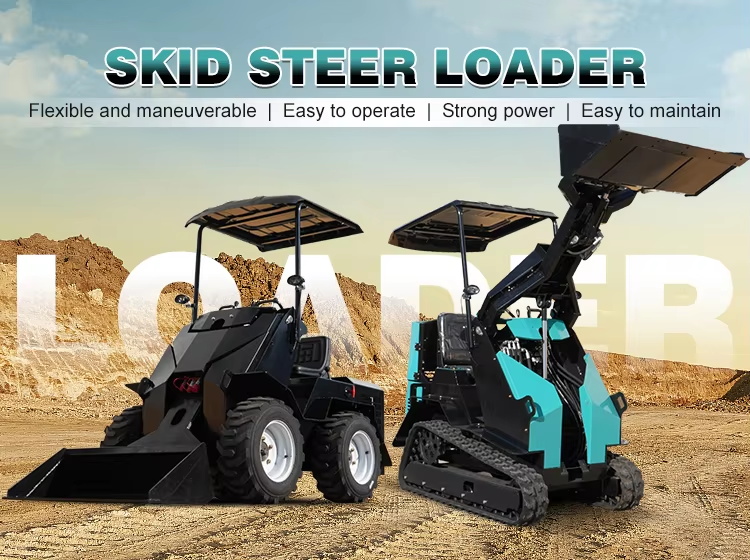Whether you’re breaking ground on a new construction site, clearing brush, or moving materials on a farm, a skid steer loader can be one of the most versatile tools in your equipment lineup. But choosing the right skid steer loader for your specific application isn’t just about brand or price—it starts with selecting the right size. The two primary categories to consider are compact frame and large frame models.

So, which one is right for your job? Let’s break it down.
What’s the Difference Between Compact and Large Frame Skid Steers?
The key distinction comes down to size, power, and lifting capacity.
- Compact Frame Skid Steers typically weigh under 2,000 lbs and are ideal for jobs in tight, confined areas.
- Large Frame Skid Steers weigh 2,200 lbs or more and offer significantly more lifting power and stability.
Each category has its strengths depending on the demands of your project.
Compact Frame Skid Steers: Built for Tight Spaces
Best For:
- Landscaping
- Indoor demolition
- Residential construction
- Working in urban or narrow environments
Advantages:
- Maneuverability: Small footprint allows easy navigation through narrow gates, alleyways, and compact worksites.
- Lower operating cost: Smaller machines often mean less fuel consumption and easier maintenance.
- Gentler on surfaces: Reduced ground pressure makes them ideal for working on finished lawns or delicate terrain.
Limitations:
- Lower lift capacity: May not be suitable for lifting heavy pallets or large debris.
- Limited hydraulic flow: Some high-powered attachments may not be compatible.
Large Frame Skid Steers: Power Meets Versatility
Best For:
- Roadwork and heavy construction
- Forestry and land clearing
- Handling heavy materials or high-capacity attachments
Advantages:
- High lift and breakout force: Perfect for handling large loads, heavy pallets, or compacted soil.
- Better stability and traction: Ideal for rough or uneven terrain.
- Attachment-ready: Capable of running high-flow hydraulics for demanding tools like cold planers, stump grinders, and snow blowers.
Limitations:
- Size: Larger machines can be difficult to transport and less maneuverable in tight spaces.
- Higher cost: More expensive to purchase, fuel, and maintain.
How to Choose: Questions to Ask Before You Buy or Rent
- What type of jobs will you be using it for most?
If you’re mostly moving mulch or working in backyards, a compact model may suffice. If you’re lifting stone pallets or clearing land, go large. - What kind of terrain will you be operating on?
Uneven or muddy ground favors larger models with better traction and stability. - Do you need specific attachments?
Some attachments require higher hydraulic flow, which smaller machines may not support. - What are your transportation and storage capabilities?
Make sure you can transport and store the skid steer safely and legally.
Final Thoughts
There’s no one-size-fits-all answer when it comes to skid steer loaders. Choosing between a compact and large frame model depends on your application, environment, and budget. Take the time to assess your needs and consult with a trusted equipment dealer or rental provider.
By selecting the right skid steer loader, you’ll not only improve productivity—you’ll also extend the life of your machine and get better results on every job.





